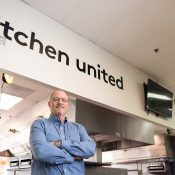Outside the Box: Why Restaurants Need to Rethink Delivery
5 Min Read By Jim Collins
As a restaurant owner myself, I entered the world of delivery hopeful that we would see significant incremental sales and profits through the channel pushed open by millions--now billions--of dollars in marketing from GrubHub, UberEats, DoorDash and others. I was hopeful that this would be the case, because that’s what I was told in the countless emails I received promoting the various delivery services.
And then reality struck.
30 percent?
You want 30 percent?
Why?
Do you know anything at all about the restaurant business?
Do you have any idea how thin our margins are?
(These loud thoughts banged around inside my head as I reviewed the thick contract sent by the first provider I chose.) The sales rep patiently explained to me, as I’m sure she does to countless restaurateurs around the country, that that’s what it costs for the service to recruit new customers and also to recruit drivers. If I didn’t want to pay it, no problem. I didn’t have to use the service. I didn’t…
Sorry, You've Reached Your Article Limit.
Register for free with our site to get unlimited articles.
Already registered? Sign in!


